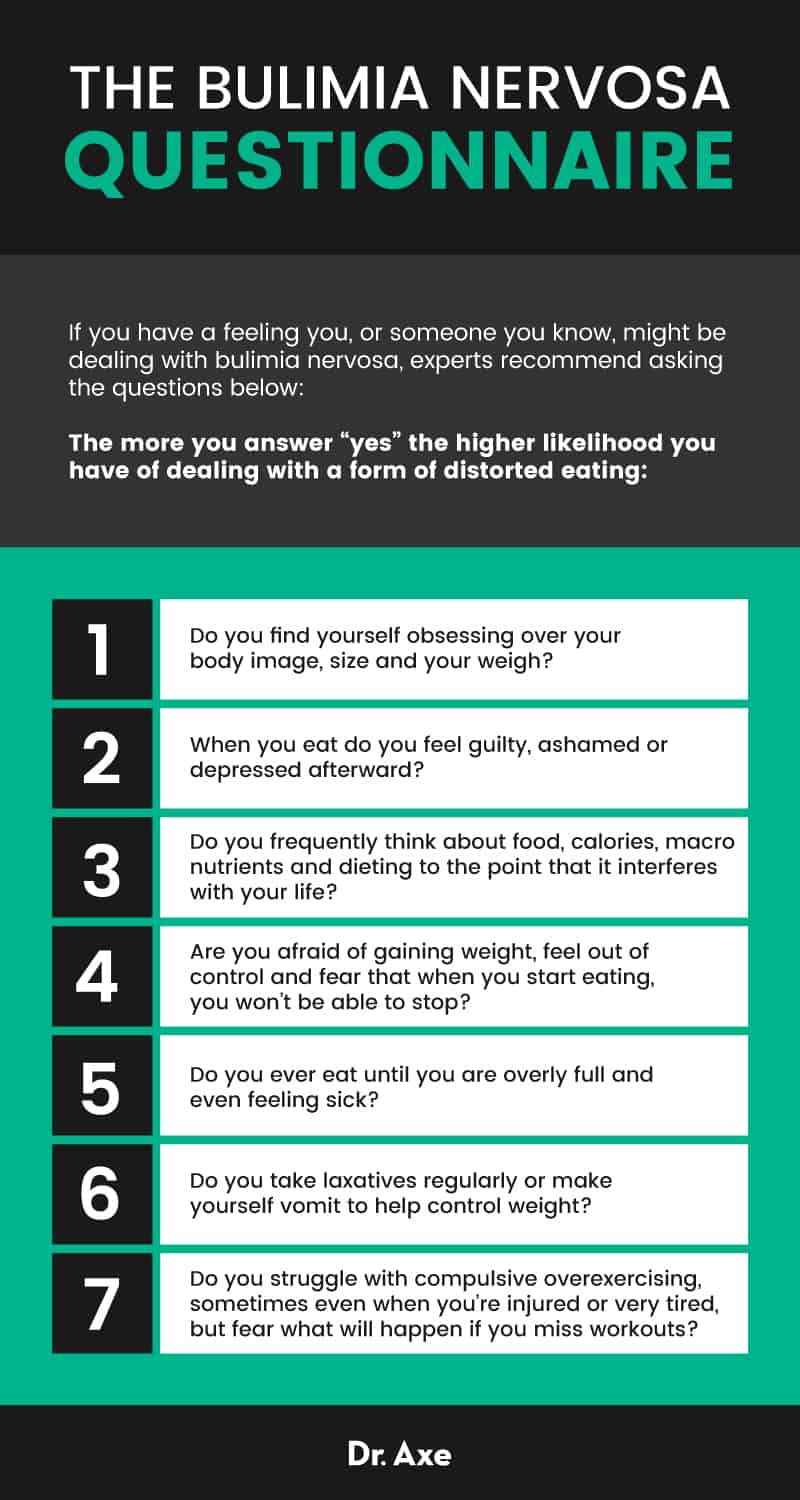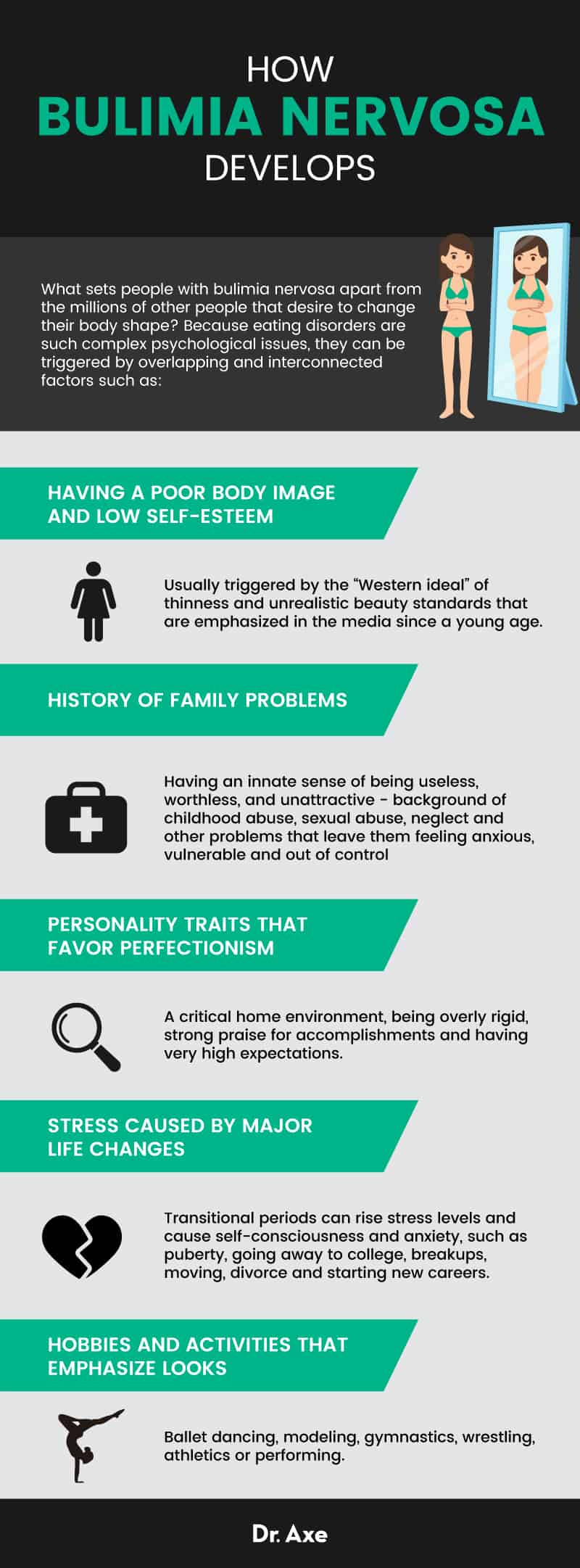This Dr. Axe content is medically reviewed or fact checked to ensure factually accurate information.
With strict editorial sourcing guidelines, we only link to academic research institutions, reputable media sites and, when research is available, medically peer-reviewed studies. Note that the numbers in parentheses (1, 2, etc.) are clickable links to these studies.
The information in our articles is NOT intended to replace a one-on-one relationship with a qualified health care professional and is not intended as medical advice.
This article is based on scientific evidence, written by experts and fact checked by our trained editorial staff. Note that the numbers in parentheses (1, 2, etc.) are clickable links to medically peer-reviewed studies.
Our team includes licensed nutritionists and dietitians, certified health education specialists, as well as certified strength and conditioning specialists, personal trainers and corrective exercise specialists. Our team aims to be not only thorough with its research, but also objective and unbiased.
The information in our articles is NOT intended to replace a one-on-one relationship with a qualified health care professional and is not intended as medical advice.
Warning Signs of Bulimia Nervosa (Plus, 4 Healing Methods)
August 9, 2018

Eating disorders are a real problem, especially among girls and women. In fact, according to research in the New York Times, 95 percent of patients with anorexia and about 85 percent of patients with bulimia nervosa are female. (1)
How can you tell if you or someone you know is suffering the effects of bulimia, and why do these type of eating disorders take hold in the first place? There are many reasons, and all of them can lead to dangerous side effects and serious bodily harm, such as irregular periods, hormonal imbalances and more.
The effects of bingeing on junk foods and then purging can negatively impact someone’s metabolism, fertility, hormonal balance, digestive functions, sleep and mental capabilities. But there’s also an enormous amount of stress caused by battling bulimia nervosa that impacts all areas of life.
With bulimia, someone usually battles an intense preoccupation with her body image, which leads to severe calorie restricting plus body shaming, ongoing feelings of anxiety, guilt and remorse. In fact, sadly the risk of death from suicide or medical complications is markedly increased for people dealing with eating disorders of any kind.
Many people with bulimia or other eating disorders tend to judge themselves very harshly and focus on self-perceived problems and character flaws. Without help, the chronic stress caused by this disorder can deteriorate someone’s body along with her relationships, sense of self-worth and control. The earlier someone receives help for bulimia, the better chance she has of redeeming her health and preventing future relapses.
What Is Bulimia Nervosa?
Bulimia is considered a serious eating disorder that revolves around “bingeing and purging,” meaning eating large amounts of foods at once followed by attempting to “get rid” of the calories that were consumed. Bulimia is considered a life-threatening disorder that affects millions of people, especially women, and is more common than anorexia nervosa.
Because bulimia involves erratic eating patterns and usually forceful vomiting, laxative abuse and sometimes overtraining, there are multiple symptoms and risks involved — both physically and mentally.
The thing that makes bulimia nervosa unique to other eating disorders is the behavior of regularly purging, regardless of how exactly that happens. The emphasis is always on eliminating extra calories and attempting to stall weight gain or to achieve weight loss, but unfortunately this happens in unhealthy ways.
Symptoms and Risk Factors
According to the National Eating Disorders Organization, bulimia nervosa is characterized by symptoms that include: (2)
- Cycles of consuming very large amounts of food (the “binge”) followed by compensation behaviors to prevent weight gain (the “purge”)
- Intense feelings of chronic stress and being out of control when binge eating
- Self-esteem that is highly dependent on body weight and image
Most people think of those struggling with distorted eating patterns as only those who are very thin, but the truth is men and women of all shapes and sizes can have eating disorders. In fact, most people with bulimia don’t appear to have noticeable signs of a problem and are usually about average in terms of body weight.
Bulimia can develop for many different reasons and is usually a combination of several environmental and genetic factors. Some of the known risk factors that make someone more likely to develop bulimia nervosa include (3):
- Being a woman
- Being an adolescent or young adult (about 1 to 2 percent of the total population of young women in the U.S. suffer from bulimia nervosa)
- Being involved in a type of sport or hobby that praises being at a thin weight (including dancing, gymnastics, figure skating, wrestling, etc.), and thus it’s associated with female athlete triad
- Having someone in the family who struggles with bulimia
- Having a history of dieting, weight gain/loss and a preoccupation with thinness (resulting in restrictive eating periods that force the body into “starvation mode“)
- A history of depression, anxiety and mental disorders
- A psychotic episode by the age of 13 (4)
If you have a feeling you or someone you know might be dealing with bulimia nervosa, experts recommend asking yourself the questions below. The more you answer “yes,” the higher likelihood you have of dealing with a form of distorted eating (5):
- Do you find yourself obsessing over your body image, size and weight?
- When you eat, do you feel guilty, ashamed or depressed afterward?
- Do you frequently think about food, calories, macronutrients and dieting to the point that they interfere with your life, work and relationships?
- Are you afraid of gaining weight, feel out of control and fear that when you start eating, you won’t be able to stop?
- Do you ever eat until you are overly full and even feeling sick?
- Do you take laxatives regularly or make yourself vomit to help control weight?
- Do you struggle with compulsive over-exercising, sometimes even when you’re injured or very tired, but fear what will happen if you miss workouts?

How Bulimia Nervosa Develops
Contrary to popular belief, everyone suffering from bulimia doesn’t necessarily throw up. Bulimia is usually categorized into two groups: those who purge in the traditional way we think of purging and those who don’t. “Purging bulimia” involves regularly vomiting or using laxatives, diuretics or enemas after bingeing episodes, while “non-purging bulimia” involves compensating for calories in other ways.
Some of the common ways that a non-purging bulimic tries to “make up” for eating large amounts of calories include severely restricting food intake, regular periods of fasting/intermittent fasting or excessive exercise beyond a healthy amount.
Many people with bulimia don’t fall neatly into one category and might demonstrate behaviors from both. For example, someone might go long periods without using laxatives or vomiting but instead focus on extreme exercising to burn many calories coupled with a restrictive diet.
In fact, most people with bulimia nervosa have some overlapping symptoms and behaviors from other eating disorders, such as anorexia (by restricting) or binge eating disorder. While the severity of bulimia can range a lot depending on the case, the underlying desire and distortion are usually the same: to become thinner and achieve a specific body shape by whatever means necessary, even if it’s harmful to someone’s health.
What sets people with bulimia nervosa apart from the millions of other people that desire to change their body shapes? Because eating disorders are such complex psychological issues, they can be triggered by overlapping and interconnected factors, such as: (6)
- Having a poor body image and low self-esteem. This is usually triggered by the “Western ideal” of thinness and unrealistic beauty standards that are emphasized in the media since a young age
- History of family problems and abuse, including having an innate sense of being useless, worthless and unattractive. Unfortunately, some people with bulimia come from a background of childhood abuse, sexual abuse, neglect and other problems that leave them feeling anxious, vulnerable and out of control
- Personality traits that favor perfectionism. A critical home environment, being overly rigid, strong praise for accomplishments and having very high expectations are all risk factors
- Stress caused by major life changes. Transitional periods can raise stress levels and cause self-consciousness and anxiety, such as puberty, going away to college, breakups, moving, divorce and starting new careers
- Hobbies and activities that emphasize looks. A high percentage of people with bulimia come from a background of ballet dancing, modeling, gymnastics, wrestling, athletics or performing
Side Effects of Bulimia Nervosa
How can bulimia harm the body exactly? One of the most dangerous and common side effects of bulimia is damage done to the digestive system, since both bingeing and purging have negative effects on things like digestive enzyme production, fluid balance and electrolyte levels.
Vomiting and taking laxatives can both lead to electrolyte and chemical imbalances, which can wind up causing cascading effects in other systems and organs like an abnormal heartbeat and symptoms of depression. At the same time, high amounts of stress coupled with nutrient deficiencies can alter hormone levels and change neurotransmitter functioning.
Some of the ways that bulimia nervosa diminishes someone’s health and puts him or her at a greater risk for both mental and physical illnesses include: (7)
- An imbalance in potassium and sodium, since vomiting/purging can alter balances of key nutrients, electrolytes and fluids
- Irregular heartbeat and higher likelihood of heart attacks, heart failure and death due to an electrolyte imbalance
- Dehydration, which can negatively affect digestion, mental capabilities, muscle movements and heart functioning
- Reduced ability to digest food correctly and absorb nutrients
- Problems going to the bathroom normally, including bloated stomach, constipation and diarrhea, caused by taking laxatives and altering enzyme and electrolyte levels
- Higher risk for ulcers and gastric ruptures
- Higher likelihood of having weight fluctuations that negatively impact thyroid and hormonal health
- More likely to deal with infertility and irregular periods
- Yellowing and deteriorating of the teeth and gums
- Broken blood vessels in the eyes
- Swelling, sore throats, and pain occurring in the throat and esophagus from vomiting
- Lowered immune response and more common infections or illnesses
- Higher risk for depression, anxiety disorders and suicide
- Higher inflammation levels, which can raise the risk for various chronic diseases
Signs that Someone You Know Might Be Battling Bulimia
To those who have never struggled with distorted eating, bingeing and purging might sound completely undesirable and very confusing — and in some ways even people with bulimia feel this way! Most people struggling with bulimia nervosa actually recognize that their behaviors are counterproductive, unusual, unhealthy and dangerous.
People with bulimia often describe their situations as constant inner battles, almost like they have two or even three opposing voices in their heads, all of which have different desires and agendas. The inner conflict comes from on one hand having a strong desire to lose weight or stay thin, while on the other hand having an out-of-control and compulsive drive to binge eat. Many people also have a “voice of reason” that recognizes this situation isn’t normal or healthy, yet it still remains hard to break out of the binge/purge cycle.
What is a “binge” exactly, and how does it differ from other forms of emotional eating or attempts at losing weight? Bingeing is often done in private, since people with bulimia often feel embarrassed, ashamed or anxious about eating. This is one reason why it can be hard to know if someone has a problem.
When someone does binge, it’s not unusual to consume between 3,000 to 5,000 calories at once within a few short hours, although each person’s definition of “bingeing” is different. With every binge comes an increasing feeling of being out of control of someone’s weight and relationship to food, which is one reason why the binge/purge cycle makes anxiety levels skyrocket and promotes withdrawing socially.
Following an episode of bingeing, most people feel extreme panic, anxiety, guilt and shame over their actions. This is why few willingly open up to those around them for help. On top of worrying about their actual body sizes and weight fluctuations due to bingeing, people with bulimia start to question their own character and fear what other people would think if they found out about their behaviors.
Since living with bulimia can be very isolating and scary, it makes the situation even worse. The more time that goes on, the more weight that is gained or lost, and the more shame that is felt, usually the harder it is to finally step forward, address the problem and solve it.

Some common warning signs of bulimia, or that someone you know could use help with his or her relationship to food, include: (8)
- Noticeable weight fluctuations, sometimes quickly and without an explanation as to how
- Clues that someone has been binge eating, including large amounts of food going missing within a short period of time, without an explanation as to where the food went
- Evidence of binge episodes after the fact, including empty food containers, wrappers, etc.
- Someone making frequent trips to the bathroom shortly after eating
- An increase in secrecy surrounding eating, such as getting up in the middle of the night to eat alone or eating in the car and on-the-go — also noticing that the person no longer likes to eat around others, go to restaurants or parties, etc.
- A preoccupation with eating certain things and having strong cravings — for example, a desire to run out to quickly get a food that someone is fixated on
- Physical symptoms of purging, including changes to teeth/gums, staining of the teeth, or swelling in the face, neck and jaw; some people also show growths/calluses on their hands and knuckles (used to induce vomiting)
- Ritualistic patterns when eating, including only eating at certain times or avoiding certain food groups
- Generally becoming more withdrawn, isolated and secretive in all areas of life
- Engaging in other compulsive behaviors, including drinking alcohol, taking drugs or abusing prescriptions
- Becoming more interested in weight loss, fad dieting and food
4 Steps Toward Healing from Bulimia Nervosa
Eating disorders of all kinds can be complicated issues to fix at their roots, and there is no known “cure” for bulimia that works for all people. That being said, health professionals and distorted eating experts have come a long way in terms of helping patients recover and improve their quality of life.
Some of the most important steps you or someone you know can take to fight bulimia include:
1. Get Professional Help
All eating disorders are complex problems that usually require seeking help, such as from a therapist, doctor and nutritionist. The compulsive thought patterns that cause bulimia are believed to work like a cycle, since they become habitual and “the new normal” for someone who is suffering. However, with help and proper training to shift someone’s thought patterns and behaviors, the harmful cycle can be broken and “intuitive eating” can take its place.
To help with this process, sometimes antidepressants are used. And in severe situations, a hospital stay might be needed to the patient is carefully monitored. (9)
In most cases, a team of professionals can help someone take the necessary steps toward dealing with underlying feelings of body dysmorphia, secrecy, anxiety, guilt and shame. One of the most successful treatment methods for battling bulimia and other eating disorders is called cognitive behavioral therapy (CBT), which focuses on changing thought patterns that then help someone change negative behaviors. (10)
Through CBT, psychologists help their patients examine their own beliefs about themselves, their capabilities, control and self-worth, and then challenge these very thoughts that can wind up triggering harmful compulsions. (11) By addressing the core emotional issues (underlying anxiety and depression, low self-esteem, and feelings of isolation and loneliness), it’s possible to finally form new ways of handling stress that don’t involve food and to practice mindful eating.
2. Stop the Dieting Mentality
Ironically, purging does not usually result in weight loss (at least sustainably) for most people with bulimia. Vomiting, exercise and using laxatives usually don’t offset the calories consumed when bingeing, so people with bulimia usually never wind up reaching their “ideal weight” and only perpetuate the distorted eating cycle.
Some experts believe that vomiting, for example, only “erases” about 50 percent of the calories consumed, while laxatives only about 10 percent. Many people actually wind up gaining weight long term, as opposed to slimming down and looking the way they desire to.
For a high percentage of people with an eating disorder, their intentions start off somewhat innocent — usually wanting to lose some weight. But restriction can act like a trigger and wind up causing an obsession with food, dieting and weight loss. As a consequence, the body responds with powerful cravings, increased hunger and compulsions that make it hard to ever achieve satiety when you eat.
In fact, the very act of “dieting” in the first place is believed to be one of the biggest causes for binge eating. You can think of it like a pendulum swinging: The more strict someone’s diet is and the more deprived she grows to feel, the likelier she is to eventually deal with “reactive eating” and strong desires for “forbidden foods.”
3. Focus More on Happiness and Health than Weight
Exploring other ways of being happy without achieving a certain body weight is usually considered the final key to resolving emotional issues that cause distorted eating. Since dieting coupled with high stress levels combine as one of the biggest risk factors for eating disorders, it usually takes shifting someone’s focus away from weight loss and putting it on holistic health and general happiness as much as possible.
Emphasizing feeling better, clearing up health issues, enjoying social situations more, being more relaxed around food and putting more energy into other areas of life that truly matter (relationships, spirituality, hobbies, family and career) is crucial for fully recovering. This process looks different for every person but might involve changing careers, ending a marriage, exploring a new form of spirituality for the first time and so on.
4. Support Those Who Are Struggling
If you’re trying to help someone else who is dealing with bulimia and distorted eating, here are useful pieces of advice from experts to keep in mind:
- Try your best to be judgment-free and supportive: It’s expected that the person recovering will feel sad, frustrated, confused, defensive or angry about her transition. Even if you feel you can’t directly relate to her situation, try to listen without judgment and avoid using scare tactics, guilt or forcefulness.
- Avoid commenting on their weight: Most people with eating disorders don’t want anyone to notice weight changes, so instead of harping on their weight loss, praising weight gain/changes or making them feel guilty about split-ups, focus on just being there without trying to fix the problem.
- Set a good example: Show those around you firsthand what a healthy relationship to food and exercise can look like. Also help show someone how you personally handle stress without turning to food and compulsions to feel better.
Final Thoughts
- Bulimia is considered a serious eating disorder that revolves around “bingeing and purging,” meaning eating large amounts of foods at once followed by attempting to “get rid” of the calories that were consumed.
- Bulimia is considered a life-threatening disorder that affects millions of people, especially women, and is more common than anorexia nervosa.
- Bulimia can develop for many different reasons and is usually a combination of several environmental and genetic factors.
- Many people with bulimia or other eating disorders tend to judge themselves very harshly and focus on self-perceived problems and character flaws.
- Four natural ways to help treat bulimia nervosa include getting professional help, quitting the diet mentality, focusing more on happiness and health than weight and supporting those who are struggling.








